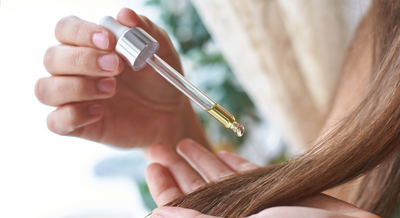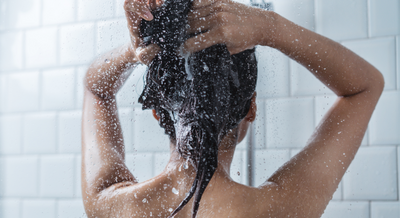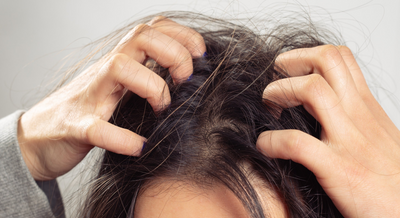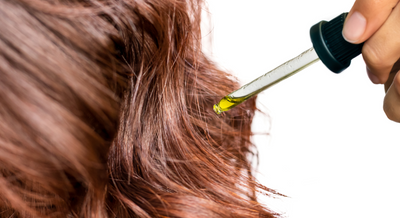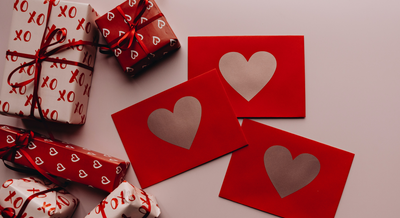There are a lot of new and exciting hair care treatments out there online, and many have come and gone, like any other fad has. However, some hair treatments are actually incredibly effective, and they manage to stand the test of time. One such treatment is the application of a hot hair oil, a treatment that has been beloved for centuries amongst hair care enthusiasts. As odd as it sounds, the act of applying hot oil to one’s hair has a slew of amazing benefits and could address a multitude of different hair concerns. Read our guide for more and see if hot hair oiling is right for you!
What is a Hot Oil Treatment?
In simple terms, a hot oil treatment is when you apply a specific hair oil or hair oil blend to your damp hair while it is warmed to a hot temperature, allowed to rest in your hair for about half an hour, and then rinsed out. While a room temperature oil on its own is extremely moisturizing and reparative for your hair, a hot hair oil applied to damp hair only amplifies the benefits. You see, your hair expands and swells when it is damp, and the increase in temperature allows the hair oil to penetrate the hair strand at a more efficient rate. As a result, the hair oil is significantly more moisturizing and effective for your hair, and it is able to seal the cuticle layer to make it smoother, softer, and shinier.
Additionally, hot hair oil application has benefits beyond just the hair strands. Applying hot hair oil to the scalp has a slew of benefits of its own, as well. For those with hair loss, hot hair oil can help to stimulate the hair follicle to boost hair growth rates. Additionally, the hot hair can help to loosen dead skin flakes and cleanse and exfoliate the scalp. As you can see, there’s no shortage of benefits to using hot hair oil.
How to Use Hot Oils on Your Hair
Although anyone can do a hot oil treatment from home, it is a treatment that must be done extremely carefully and with proper safety protocols. This is still a hot, potentially dangerous oil, after all. For a DIY hot oil treatment, follow these steps:
- Fill a large pot full of water.
- Fill a smaller bowl with your desired hair oil.
- Create a double boiler by placing the oil-containing bowl within the pot.
- Place the pot over a stove and heat the water until boiling.
- Boil the water until the oil in the bowl is extremely warm, but just short of being too hot to apply to the skin.
- While the water is boiling, wash your hair with shampoo and rinse with water.
- While your hair is still damp, apply the hot oil to your hair, working from root to tip.
- Apply a hair cap to secure the hair.
- Allow the hair to rest for 30 minutes.
- Rinse the hair with shampoo.
- Condition and rinse with water.
Which Hot Oil to Use?
When it comes to using hot oil for your hair, part of the fun is in customizing the experience by choosing an oil that works perfectly for your hair and scalp needs. As with many things relating to hair care, this depends greatly upon your specific hair type and desired needs.
Dry Hair
For dry, dehydrated hair that is craving moisture, you’ll want to choose a rich, heavier oil that can penetrate the hair strand while also coating the outer cuticle layer to prevent moisture loss. Perhaps the best oil for this hair type is coconut oil, which has been scientifically proven to penetrate the hair strand better than just about any other popular plant oil. Other popular oils include olive oil and avocado oil, which are slightly heavier oils that also provide additional fatty acids and antioxidants to improve hair health.
Oily Hair
On the other hand, if you have hair that is excessively oily and greasy, you’re going to want to look at an oil that provides moisture but fails to leave a thick, greasy layer in your hair strands. One of the best oils for this hair type is jojoba oil, which has been claimed to mimic human sebum so closely that it could potentially “trick” the hair follicle into producing less grease and oil. Another popular oil is squalene, which is an incredibly light wax ester that deeply penetrates the hair and scalp without leaving any sort of noticeable weight.
Hair Loss
When it comes to those with premature balding or hair loss, using hot hair oil is a fantastic way to stimulate the hair follicles and promote hair growth. Additionally, the use of an oil like castor oil is a fantastic way to reap additional hair growth benefits. Castor oil is the only oil that contains ricinoleic acid, which is a unique fatty acid that has been shown to potentially aid in the encouragement of proper hair growth.
Dandruff or Irritated Scalp Conditions
Those with severe scalp issues should take extra care to find oils especially suited for conditions like eczema and dandruff. Thus, you’ll want to add oils that provide anti-fungal and antibacterial benefits to prevent conditions like dandruff, along with oils that possess natural anti-inflammatory benefits to soothe scalp irritation. It would be a great idea to add an essential oil to your usual hot oil to create a unique blend that both moisturizes and treats the scalp. Essential oils that are beneficial for scalp care include peppermint, which is a natural anti-inflammatory, and tea tree oil, which is a natural antiseptic.



